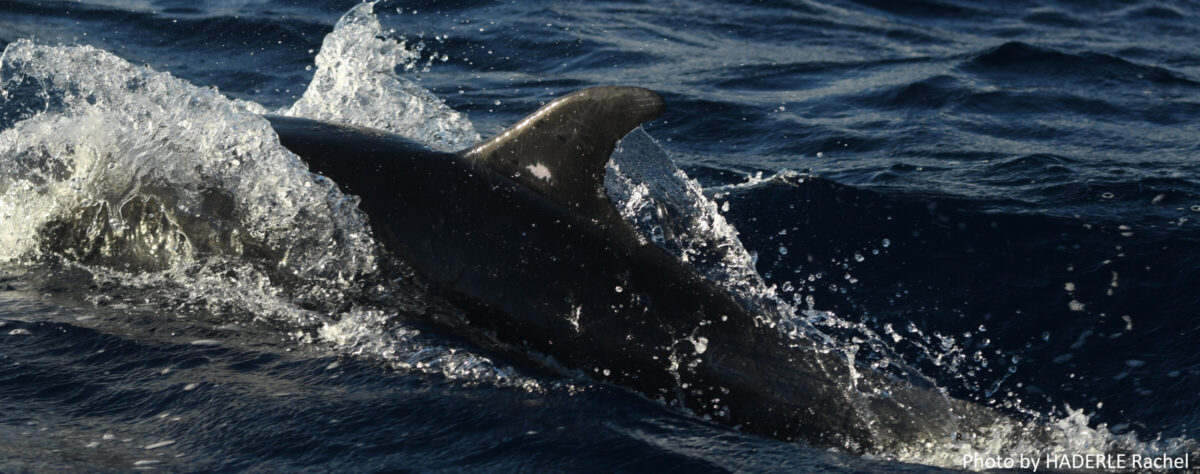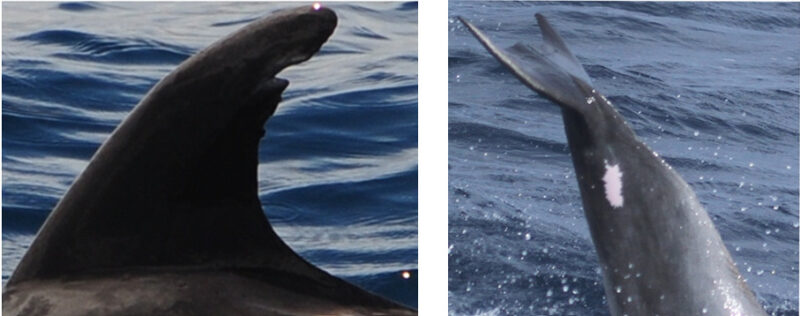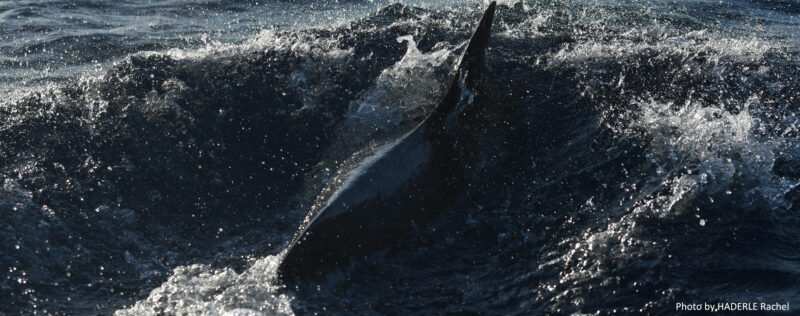First study on whitebacks : a type of bottlenose dolphins in Guadeloupe

General context
Current global changes are disrupting environmental conditions and living organisms are affected by these changes. Today an unprecedented number of species are threatened with extinction. Understanding the mechanisms by which organisms adapt to changes in their environment is essential to address this loss of biodiversity.
Variation of environmental parameters also plays a major role in divergent evolution, for example within certain species different ecotypes exist. Ecotypes are groups of individuals defined within a species that differ in space by genetic, ecological and/or physiological characteristics. It is the case for the bottlenose dolphin Tursiops truncatus (Picture 1), for which two ecotypes (coastal and pelagic) are distinguished in many regions of the global ocean. Bottlenose dolphins are a cosmopolitan species, classified as LC (Least Concern) by the International Union for Conservation of Nature (IUCN), which is found in both tropical and temperate waters.
Situation in Guadeloupe
In the Guadeloupe archipelago, at the heart of the Agoa sanctuary, the work of OMMAG (Marine Mammal Observatory of the Guadeloupe Archipelago) highlighted two distinct morphotypes (a subgroup of a specie that differs through morphological characteristics) of bottlenose dolphins : coastal and whitebacks (Picture 2), which are thought to be pelagic. Whitebacks are so named because of the accumulation of social marks (teeth marks) at the back of the dorsal fin (Picture 3) giving them a lighter colour on the back. Since 2012, OMMAG has been able to collect a large amount of data (photos and videos) on whitebacks thanks to participatory science.

Picture 2 : Comparison of the general morphology of the two morphotypes of T. truncatus found in Guadeloupe, on the left a coastal one and on the right a whiteback. The whitebacks show a darker general colour, a very light area behind the dorsal fin and a general morphology more imposing than coastal dolphins. (Photograph: Laurent Bouveret, OMMAG).
Objective
The objective here was to acquire the first knowledge on the whiteback morphotype of T. truncatus found in the Guadeloupe archipelago, via photo-identification data and social analysis.
Photo-ID & social analysis
A catalogue of marked individuals, presenting scars on their dorsal fins and/or particular depigmentation spots, was built on more than 13 000 photos and 72 videos. Photo-Identification (photo-ID) allows the individual identification of cetaceans by the recognition of distinctive natural markings such as scars and/or depigmentation spots in T. truncatus (Picture 4). This catalogue was used to track conspicuous individuals between sightings and to set up co-occurrence data between them (from 2009 to 2022). Co-occurrence data were analysed on the software SOCPROG 2.9 to study the social structure of whitebacks. Social groups of bottlenose dolphins are often described as fission-fusion societies in which individuals are associated in small groups, which merge transiently into bigger groups. GPS data from the sightings of whitebacks were used to describe their preferred geographical and bathymetric areas.

Picture 4 : Examples of identification by dorsal marking (left) and depigmentation spot (right). (Photographs : left Cedric Millon, right Antoine Chabrolle)
Main results
Strong associations exist between certain individuals and therefore the group of whitebacks studied seems to correspond to the general model of a fission-fusion type society. Besides, the observations showed that whitebacks are more frequently observed in deep waters (> 300 m) in the North of Guadeloupe.
Conclusion & perspectives
The study has provided the first precise understanding of whitebacks, which, when combined with the information available on ecotypes of T. truncatus around the world, supports the hypothesis that whitebacks correspond, in the tropical Atlantic, to the pelagic ecotype. The development of all this knowledge is essential for management and conservation issues facing the T. truncatus populations of the Guadeloupe archipelago.

 Attention, vous utilisez un navigateur peu sûr !
Attention, vous utilisez un navigateur peu sûr !